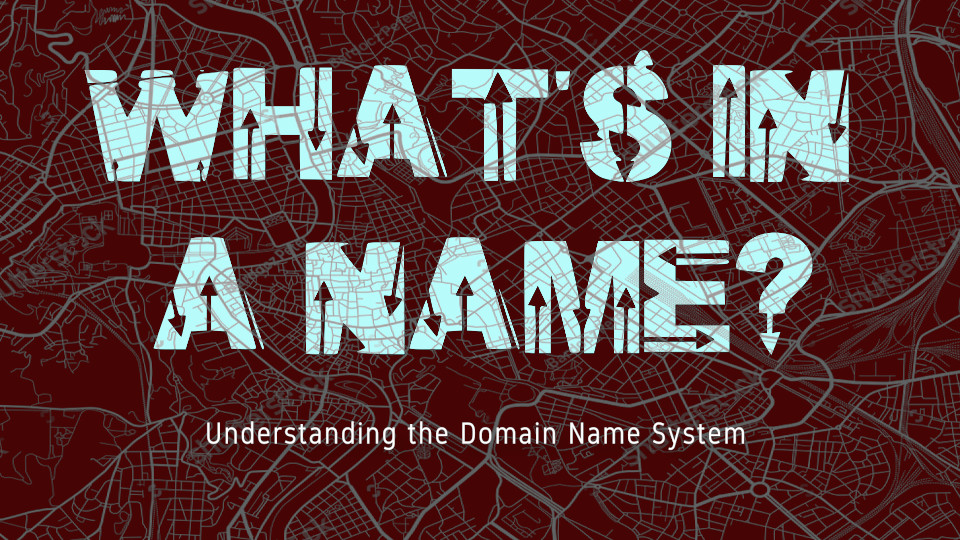What's in a Name: Understanding the Domain Name System

Tickets are no longer available for this event.
View upcoming events or subscribe to our events calendar to make sure you catch the next one.
Event description
Find out how easy it is to avoid certain forms of Internet censorship, phishing attacks, or network outages in this primer to the Domain Name System or DNS. Far from being just a way to translate names like Google.com into IP addresses, the DNS is actually a massively distributed, delegated database capable of housing all sorts of information. For administrators and programmers, understanding DNS is a crucial step to ensuring the health of applications and services. But it’s also one of the components of Internet networking most visible to users. This workshop will discuss recursive resolvers, anti-spam DNS resource records, and state-of-the-art security protocols such as DNS-over-HTTPS.
Workshop Description
In the digital world of cyperspace networks, such as the Internet, places don’t have names. They have numbers. Called Internet Protocol (IP) addresses, these numbers are used to identify the sources and destinations where network traffic, such as Web browsing, email, and video conferencing messages should go. But if computers use numbers and not names to route traffic, how do they know where to go when we type in addresses such as
google.comin our Web browser?The answer lies in DNS, the Domain Name System. Often described as “the Internet’s phone book,” DNS is actually a far more capable and integral component of networked systems than it’s given credit for. Ever since its inception in 1983, the DNS was a key enabler of the growth of the Internet and has been vital to its continued operation to this day. Beyond the popular understanding as a name-to-address lookup system, the DNS is actually a massive, distributed, delegated database that allows organizations to publish all kinds of useful information in the form of resource records (RRs). For instance, today DNS is also used to fight email spam and phishing attacks (using DNS-backed protocols like SPF, DKIM, DMARC, and DANE, and CAA resource records), perform service discovery (with SRV records), and more.
Understanding what DNS really is and how it actually works is a crucial, early step administrators must take to ensure applications and services are healthy. In this deep-dive workshop, we’ll dissect the DNS protocol itself, watching queries and replies, and we’ll trace DNS messages across recursive DNS servers, called resolvers, as they get bounced from the root DNS resolvers to the ultimate authority responsible for managing the zone in which our answer is to be found. We’ll also discuss the inherent insecurities of the original UDP-based DNS traffic, as well as how to secure DNS transmissions using state-of-the-art technology such as DNSCrypt v2, DNS-over-TLS (DoT), and DNS-over-HTTPS (DoH), which is increasingly finding its way into familiar apps like Web browsers and even the Windows 10 Operating System itself.
As this is a remote/online-only event, there is no physical class space, but attendance is still limited to 15 students, so purchase your ticket now to reserve your spot.
To participate in our webinars, you will need access to a modern Web browser such as an up-to-date copy of Mozilla Firefox or Google Chrome. You will also need a reliable Internet connection. We recommend disabling Wi-Fi and plugging your computer in to a hard-wired Ethernet network cable for the duration of the webinar, if possible.
If you would like to share your video screen or appear on camera, you will need to have and activate your own camera, such as the one built-in to many modern laptops. Similarly, to speak with the rest of the webinar participants, you will need a microphone. If you do choose to activate your microphone, we ask that you please plug in headphones/ear buds or use a headset in order to help reduce audio feedback loops that can degrade the webinar experience for other participants.
Please refer to our workshops and webinars FAQ for additional tips and advice before you join the video conference.
As with all Tech Learning Collective events, racism, queerphobia, transphobia, sexism, “brogrammer,” “manarchist,” or any kind of similarly awful behavior will result in immediate removal from class without a refund. Please refer to our lightweight social rules for details on our strictly enforced no-tolerance policy against bigotry of any kind.
About Tech Learning Collective
Tech Learning Collective is an apprenticeship-based technology school that trains politically self-motivated individuals in the arts of hypermedia, Information Technology, and radical political practice. We offer unparalleled free, by-donation, and low-cost computer classes on topics ranging from fundamental computer literacy to the same offensive computer hacking techniques used by national intelligence agencies and military powers (cyber armies). For more information and to enroll, visit TechLearningCollective.com.
Performances by
- New York NY United States
Presented by
- New York NY United States